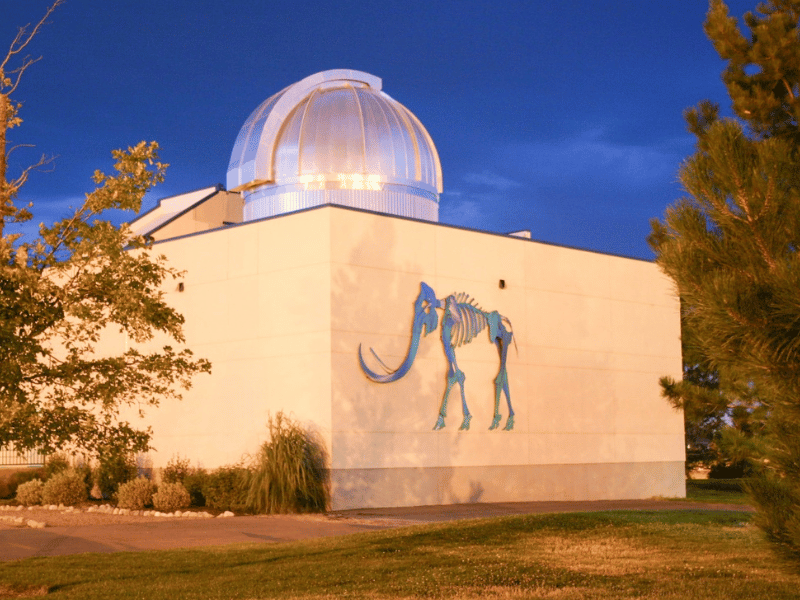
Gus Flowers, "Mammoth"
(1995, stainless steel). A gift of the artist.
Mammoth, created by Jerome artist Gus Flowers, was originally constructed as a wall piece for a mammoth exhibition inside the museum. After the completion of the Centennial Observatory in 2003, it was re-installed on the south exterior wall for visitors to enjoy. The work is a life-size reproduction of a Columbian mammoth, an Ice Age species once common here in southern Idaho.
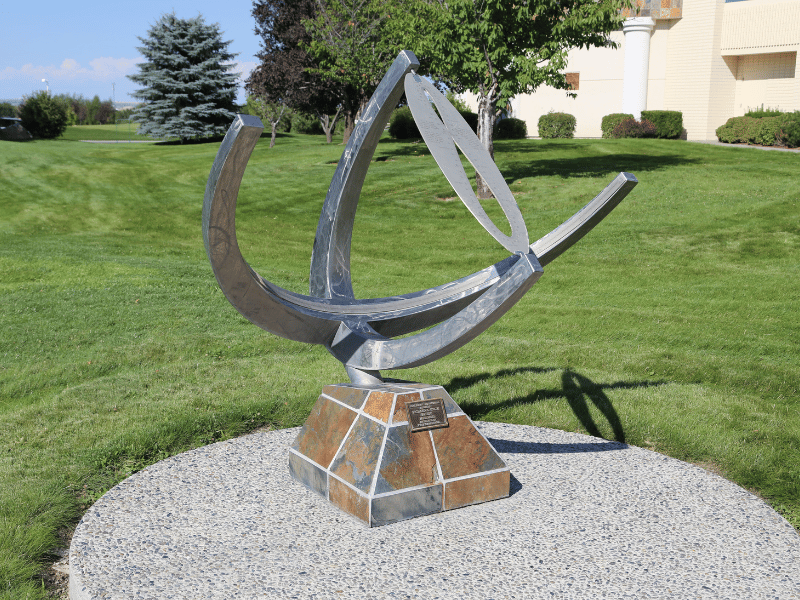
Pete Swanstrom, "Analemmic-equatorial Sundial"
(2006, stainless steel and brass). A gift of the Brizee family.
This functional timepiece and sculpture was created by Boise artist Pete Swanstrom. He says: “I created this sundial for the Herrett Center for Arts and Science, a museum, observatory and planetarium at the College of Southern Idaho in Twin Falls. With [a] futuristic swept-elliptical body style and an analemmic gnomon designed to achieve maximum date and time accuracy in 2050 AD, I call these "New Millennium" sundials.”
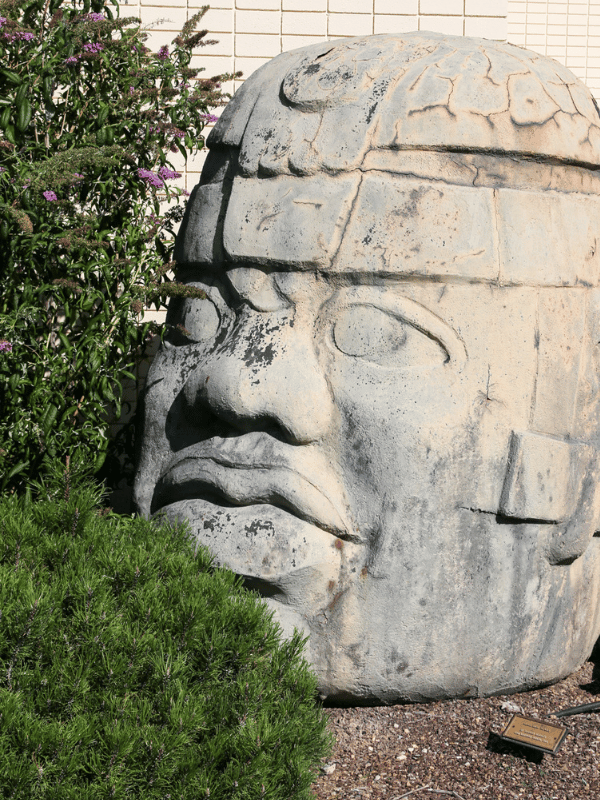
Norman Herrett and Leonard Parkin, "Olmec Head Replica"
(1972, foam and stucco)
Originally constructed at the Herrett Center’s Kimberly Road location by museum founder Norman Herrett and exhibit artist Leonard Parkin, this Olmec Head replica was moved onsite to the CSI campus in the early 1980s. The large carved head is a replica of similar stone sculptures made by the Olmec people in what is now the Vera Cruz region of Mexico. The heads are believed to represent leaders or important figures in Olmec society, and the crown-like headgear on each sculpture may be related to the Mesoamerican ball game. Olmec society thrived on the north coast of Mexico near Vera Cruz from 1500 BCE until around 400 BCE.
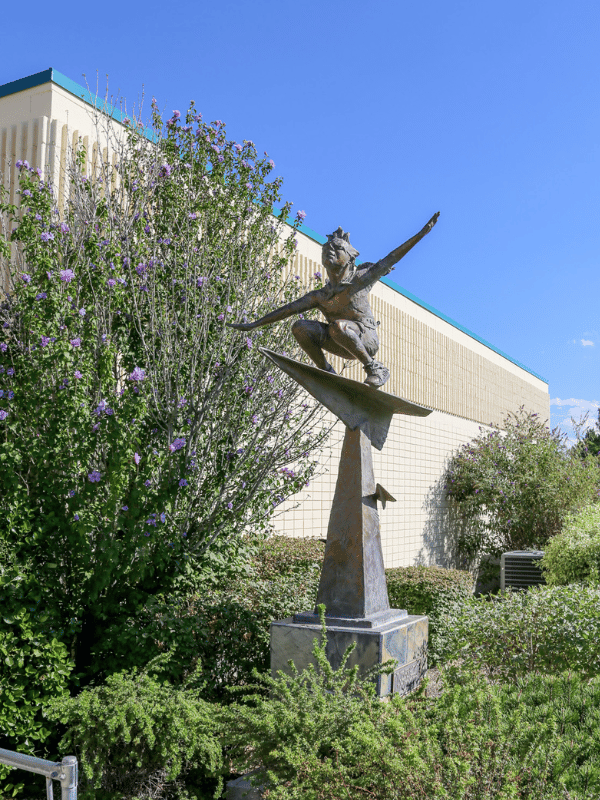
Gary Lee Price, "Paper Airplanes: Journeys of the Imagination"
(2004, bronze). A gift of the Seagraves Family Foundation.
Renowned sculptor Gary Lee Price is celebrated for his ability to bring emotions and movement to life through his bronze creations. His work often revolves around themes of family, love, and human connection. Paper Airplanes celebrates the imaginations of children, and the endless possibilities for discovery through creative play. Over his career, Price’s sculptures have found homes in public spaces, museums, and private collections around the world.
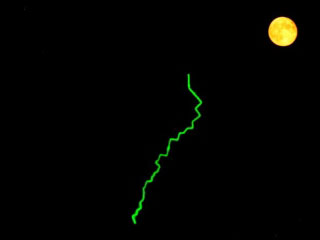
George Wray, "Crack"
(1985, neon). Anonymous gift.
Artist George Wray is well-known for his neon light sculptures, paintings, and drawings. A former University of Idaho art professor, Wray’s personal evolution from representational to abstract art led him to incorporate neon lighting into his work.
He states: “I moved from representational painting to abstract,” said Wray, “and I had an urge for something intense - but I couldn’t get it with pigment. So I began by adding just a single tube of neon, incorporating it into my painting, and that just evolved into 3-D. From that point on, light - both natural and manmade - has been the focus of my art work.”
Crack, one of Wray’s earliest neon works, is best viewed after normal business hours.